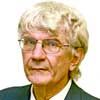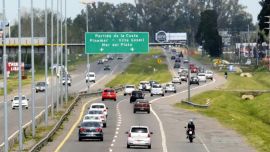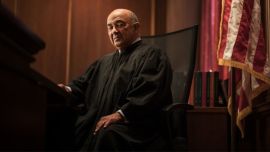Few book titles lend themselves more to this column’s slug of “And that reminds me” than the one supplying today’s headline and penned by William Henry Hudson, the centenary of whose death fell the day before yesterday. If independence hero José de San Martín (the anniversary of whose death was the previous day even if the public holiday was last Monday) is historically the iconic figure for the national identity, Hudson can be said to perform the same service for the Anglo-Argentine identity.
Not least because he represents that identity not in two but in three dimensions. Born on the pampas in 1841 and expiring in Bayswater 100 years and two days ago, he nevertheless completes the Atlantic Anglophone triangle by virtue of his parents who hailed from Boston, Massachusetts. Trading in Boston for Quilmes might not sound like any less urban a landscape today but 1841 was almost a quarter-century before the construction of the railway to Chascomús – right out in the sticks. Why his parents should move from that vibrant New England university hub to the vast emptiness of the pampas is unknown to this columnist but there was a cult of simple living in natural surroundings in the United States at the time – those were the years in which Henry David Thoreau was penning Walden.
Anyway suffice it to say that the great naturalist grew up surrounded by nature. Hudson’s first years were spent at his family’s 25 Ombues estancia in Florencio Varela but the frontier was continually expanding and the family was farming closer to Chascomús by the time he started reaching adulthood. Apart from the odd gaucho or pulpería, the young Hudson had only flora and fauna on which to exercise his keen powers of observation. Many people might consider the monotonous pampas perhaps the least promising base for exploring the endless variety of nature but not Hudson. His first fascination was with birds, making ornithological contributions to Proceedings of the Royal Zoological Society – later in life in 1889, when already well settled in Britain, he was to be a co-founder of the Royal Society for the Protection of Birds (and Honorary President in absentia of Aves Argentinas from its foundation in 1916 to his death).
That work already indicates that Hudson should be considered Anglo-Argentine in that order – in fact nearly half a century of his 81 years were spent in Britain, almost exclusively in Bayswater. His life was thus bisected into two unequal and contrasting halves – the first Argentine and rural and the second British and urban. He moved to England in 1874, earning his living with London-based writing and journalism and becoming a British subject on US Independence Day, 1900. Only two years after his arrival, he married his landlady Emily Wingrave, 11 years older and already past child-bearing age. While dying in Bayswater, Hudson was buried in Broadwater Cemetery (Worthing) next to his wife, who had died the previous year in her 92nd year – curiously enough, my sister’s Worthing home is only five minutes’ walk away from Broadwater.
So much for a thumbnail biography of Hudson but any number of people have been born in Quilmes or died in London – why should he be remembered or have a slice of Greater Buenos Aires named after him? Keen ornithologists and naturalists will not need an answer to that question but while a third of his 50 works (including the posthumously published) carried the words “birds” or “aves” in their titles, not to mention non-avian Nature, some reached a far broader readership – leading examples would be the book giving its title to this column, Far Away and Long Ago (1918), and Green Mansions (1904).
The former book is obviously going to seem far away and long ago to us today when well advanced in the 22nd century but it was hardly less so when originally published over a century ago – from the perspective of a man of 77 writing in London in the closing months of World War I, the empty pampas of a land ruled by a “tyrant anointed by God” (Juan Manuel de Rosas) in the first years of Queen Victoria must have seemed remote indeed.
Perhaps the secret of his writing was his knack for combining scientific and conceptual rigour with stylistic skills while also tapping emotions. Yet Hudson should not only be seen as a chronicler of the past or even a man of his times – while an ornithologist at heart and while the full body of his scientific work in 24 volumes goes far towards compiling a complete natural history of his age, he should also be considered a prophetic pioneer of ecology and the environmental concerns which have become so dominant in these times of climate change, decades ahead of his time, prompting us all to reflect on the future of humanity and the planetary biosphere.
A complete account of Thursday’s centenary was not possible since our press times obliged this column to be written ahead – the Museo Hudson has organised an exhibition and panel while Florencio Varela City Hall unveiled a mural at his birthplace on August 5. But no reason why his legacy should not enter into another century.



















Comments